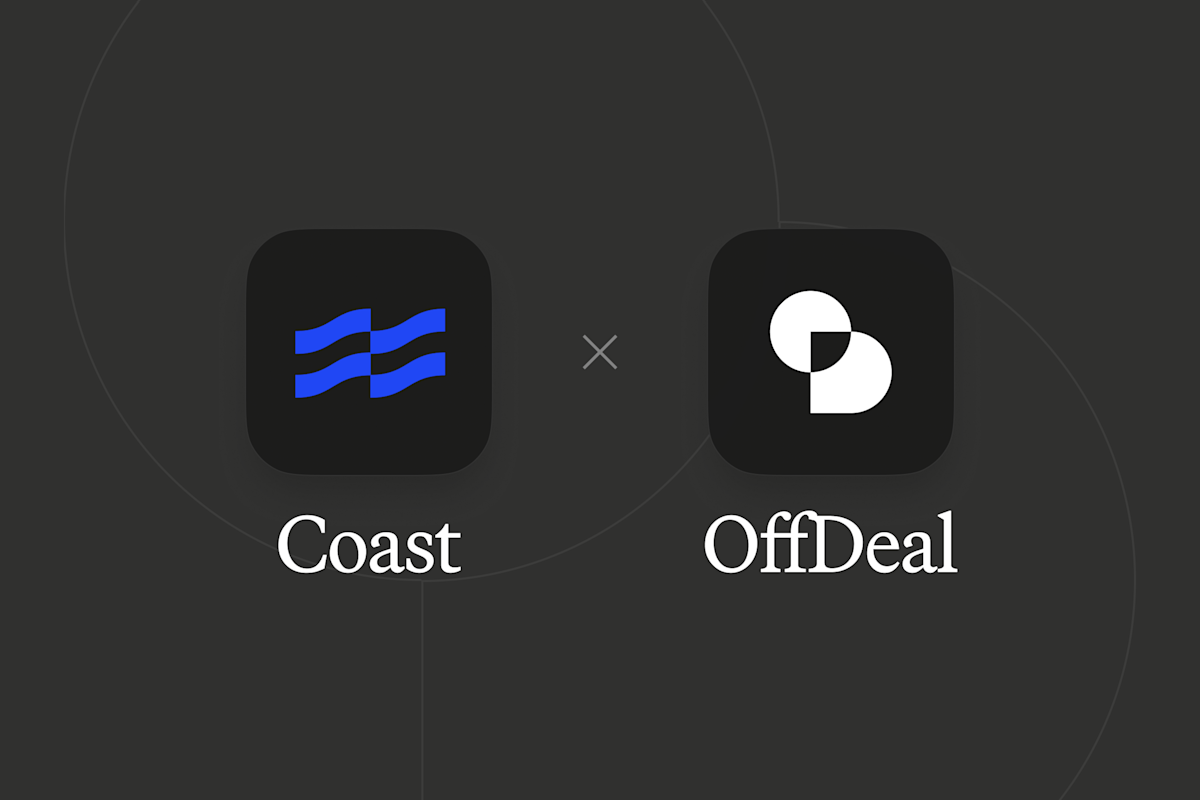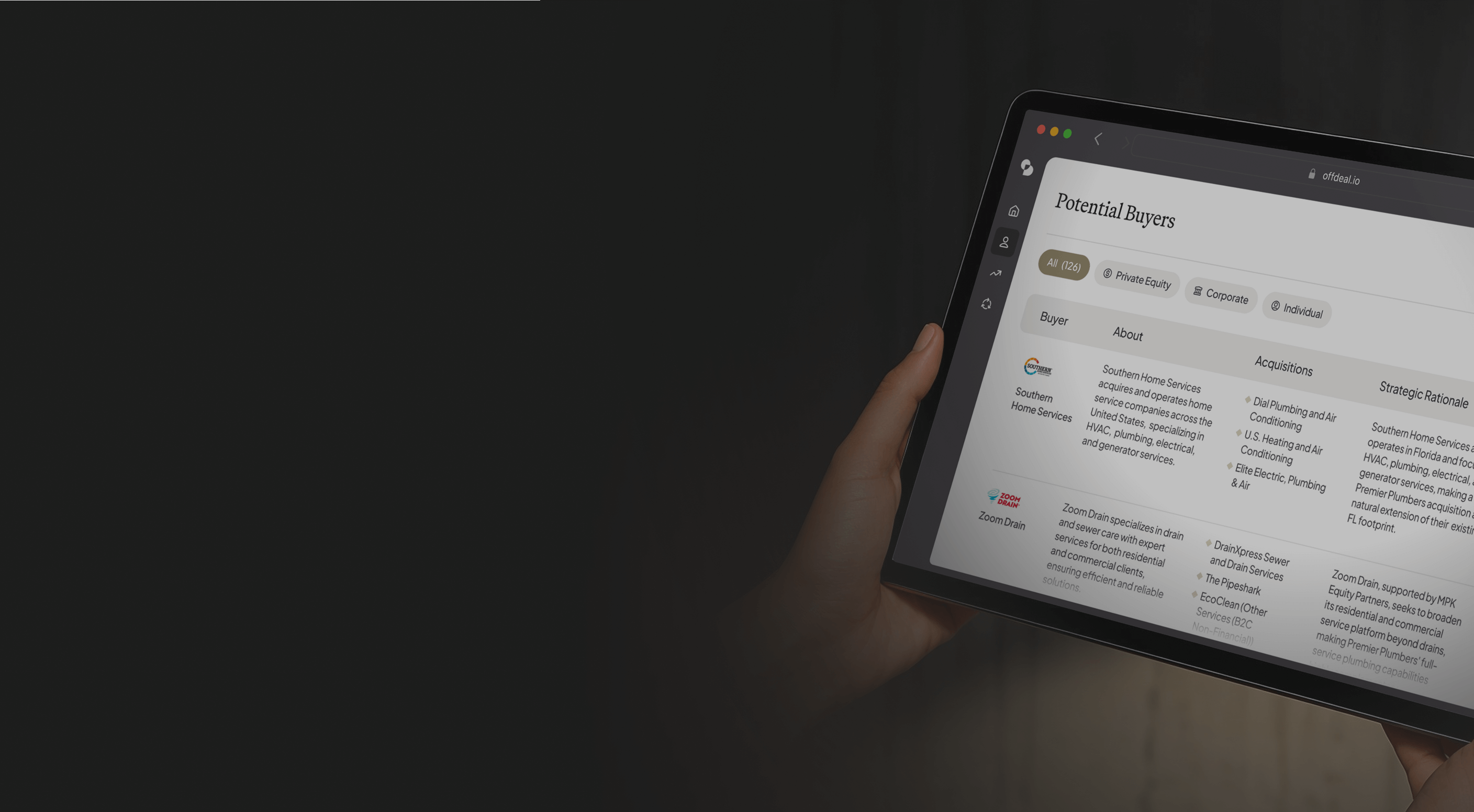Article
October 7, 2025
How Trade Businesses Can Boost Margins to Maximize Valuation
Boost your trade business's valuation. Learn how optimizing fleet efficiency and profit margins directly increases your eventual exit price.

Table of Contents
For business owners looking to maximize valuation, healthy profit margins are key, they're not just financial metrics, but indicators of your company's overall health, profitability, reinvestment potential, and long-term viability. Slight improvements in margin management can significantly boost your bottom line and eventual exit price across any industry.
In trade businesses like HVAC, plumbing, landscaping, electrical services, transportation, or construction (especially those relying heavily on vehicle fleets) the size and management of your fleet directly impact business value by influencing operational footprint, efficiency, and risk. This guide explains how to optimize margins while understanding fleet dynamics to achieve higher valuations across these sectors.
The Margin Connection: Why Margins Drive Business Value
Gross margins, the percentage of revenue left after subtracting costs like labor, materials, and fleet maintenance are a key sign of your business's health. They show how efficiently you’re turning sales into profit. When optimized (e.g., by cutting costs or improving pricing), they directly enable higher profits and boost free cash flow. This increased cash flow is what buyers focus on during exits, applying multiples to it that can drive up your overall business valuation, making even small margin improvements worth hundreds of thousands in added value.
Consider this example to see the direct impact:
A plumbing company with $2 million in revenue at a 33% margin generates $660,000 in gross profit.
By increasing margins just 3% through better cost control and efficiency, annual profit rises by $60,000.
Applying a conservative 5x valuation multiple, this profit boost adds $300,000 to the business's value, without needing extra sales.
By strategically managing and increasing your margins, you create more profit, which directly translates to a higher business valuation, making it a critical focus for long-term success.
How Fleet Size Directly Impacts Valuation in Trade Industries
In many trades, fleet size and management are tied to your operational effectiveness and profitability, influencing your exit multiple dramatically.
Specialty Trades (HVAC, Plumbing, Landscaping, etc.)
In specialty trades, larger, well-optimized fleets often correlate with higher valuations but efficiency matters at every size:
Route-based businesses (landscaping, pest control, pool servicing): Larger fleets can support consistent, predictable revenue streams. Smaller fleets (5–10 vehicles) may yield lower multiples on average, but highly optimized operations can still command strong valuations. Larger fleets (20+ vehicles) can push valuations higher due to reduced operational risk and increased scalability.
HVAC and plumbing: Well-managed fleets—regardless of size—boost technician productivity, reduce downtime, and lower operational costs, all of which support higher EBITDA multiples.
Fleet optimization and margin control go hand-in-hand, as efficient vehicle utilization directly reduces expenses and boosts margins.
Ground Passenger Transportation (Limousine, Taxi, Ambulance/EMS)
In ground passenger transportation, fleet size dictates revenue potential and stability:
Larger fleets (50+ vehicles) in limousine and taxi services enjoy economies of scale, secure corporate contracts, and can command higher EBITDA multiples.
Ambulance services with substantial fleets (30+ ambulances) attract higher multiples due to reliability in service contracts and emergency response capabilities.
Maintaining a modern fleet, coupled with tight expense management, ensures both high service quality and premium valuations.
Construction: Fleet Size Influences Asset and Operational Valuations
For construction companies, fleet size and condition significantly influence valuations:
Larger, modern fleets significantly lower future capital expenditures, increasing valuation multiples.
Asset valuations on larger fleets commonly command value premiums, reducing perceived risk for buyers and boosting overall business worth.
Proactive fleet maintenance and expense management thus become strategic imperatives, enhancing both immediate profitability and long-term valuation.
Actionable Strategies to Improve Margins and Fleet Efficiency Simultaneously
Efficient fleet management is a proven route to margin enhancement. Here’s how trade businesses can leverage this insight, with tools like Coast seamlessly integrating to provide real-time insights and controls:
Rigorous Cost Management
Regularly audit fleet-related expenses, fuel, maintenance, repairs, and insurance, using platforms like Coast for automated tracking and alerts on potential overruns.
Negotiate bulk purchasing and maintenance contracts to leverage economies of scale, while Coast's budgeting features help enforce spending limits to protect margins.
Optimize Labor and Fleet Utilization
Use routing software integrated with expense tools like Coast to minimize drive time, maximize daily job completions, and reduce fuel waste.
Provide regular training to enhance technician productivity, directly impacting profitability, and pair it with Coast's visibility into per-job expenses for even tighter efficiency.
Monthly Operating Expense Reviews
Identify inefficiencies or hidden expenses promptly, with real-time dashboards highlighting fleet trends to catch issues early.
Deploy proactive strategies to address fleet aging, avoiding maintenance-related downtime and higher operating costs, supported by Coast's predictive alerts on vehicle performance.
Leveraging Coast to Improve Margins and Fleet Valuation
Trade businesses significantly benefit from dedicated fleet expense management platforms like Coast, strategically improving margins and fleet utilization:
Real-time Fleet Expense Visibility: Instantly identify overspending and unauthorized expenditures, enforcing immediate corrections.
Customized Budgeting Tools: Align fleet-related expenditures (fuel, parts, maintenance) directly with margin targets, ensuring predictable, scalable growth.
Behavioral Shifts Through Transparency: Open tracking promotes employee accountability, reducing wasteful expenses and improving overall profitability.
Expense and Fleet Optimization: Coast’s software reduces fleet costs by 15% or more, increasing gross margins and improving EBITDA multiples through enhanced efficiency and reduced downtime.
Integrating Coast’s technology provides tangible bottom-line benefits, directly translating to higher valuations at exit.
Real World Success: How GWT Transformed Fleet Management and Cut Costs by $20k Monthly
Greene Worldwide Transportation (GWT), under the leadership of founder and president Jeff Greene, demonstrates the direct impact of strategic fleet expense management on business profitability. Before implementing Coast, GWT struggled with poor customer service, limited reporting capabilities, and inefficient expense tracking from their previous fuel card provider.
The Challenge: GWT faced significant roadblocks including delayed card replacements, difficult-to-access information, and lack of transparency into fleet expenses. These operational inefficiencies were directly impacting their bottom line and limiting their ability to optimize margins.
The Coast Solution: After transitioning to Coast, GWT immediately gained access to comprehensive reporting capabilities, real-time transaction monitoring, and enhanced security measures. The platform's integration with Samsara fleet controls enabled precise vehicle proximity monitoring and accurate fuel usage tracking.
Measurable Results: The transformation delivered substantial financial impact:
8-10% reduction in monthly fuel expenses
$10,000 to $25,000 in monthly savings
Enhanced fraud detection that identified and eliminated unauthorized usage, including terminating a driver who was attempting to bypass the system
Streamlined IFTA reporting and immediate notifications of fuel grade errors
Valuation Impact: For a transportation company like GWT, these operational improvements translate directly to higher business valuations. The monthly savings of $10,000-$25,000 represent $120,000-$300,000 in annual profit improvement. Applied to typical transportation industry multiples of 4-6x EBITDA, this operational efficiency boost could add $480,000 to $1.8 million in enterprise value.
GWT's success exemplifies how fleet expense optimization through Coast creates a direct pathway to enhanced profitability and business valuation—exactly what acquirers seek when evaluating transportation and fleet-dependent business.
Best Practices to Sustain Margin and Fleet Optimization Long-Term
Consistent profitability and valuation growth require ongoing commitment:
Benchmark Internally and Externally: Regularly compare margins and fleet metrics against historical performance and industry standards.
Automate Tracking: Utilize fleet management platforms (e.g., Coast) to streamline data collection, reducing administrative burden and ensuring accurate financial insights.
Invest in Workforce Training: Continuous technician training boosts productivity, reduces costly callbacks, and ensures optimal vehicle utilization.
Regular Expense and Fleet Audits: Monthly audits maintain margin discipline, fleet quality, and proactive cost management.
Immediate Next Steps for Trade Business Owners
To position your business for maximum valuation at exit:
Regularly benchmark fleet conditions and profit margins.
Implement monthly expense and fleet audits.
Integrate fleet and expense management software like Coast for sustained improvements.
View margin and fleet optimizations as direct equity creation.
Strategically combining margin improvement and fleet optimization is your best path to ensuring your trade business achieves peak value when you decide to sell.

Preview Buyers for Free
Try our buyer match tool to receive a personalized list of active buyers in your industry

